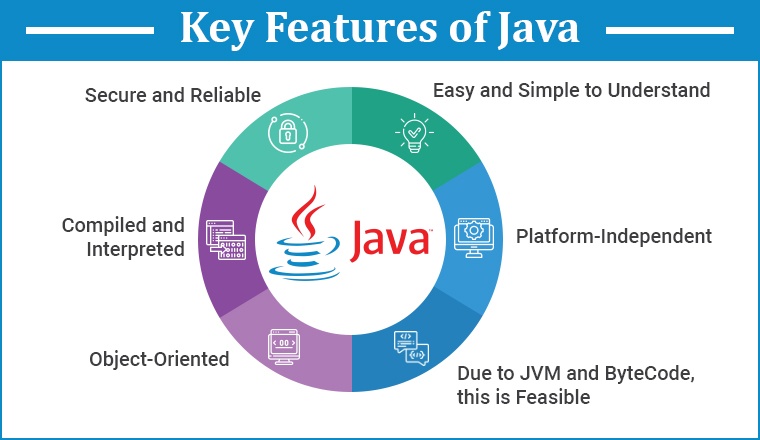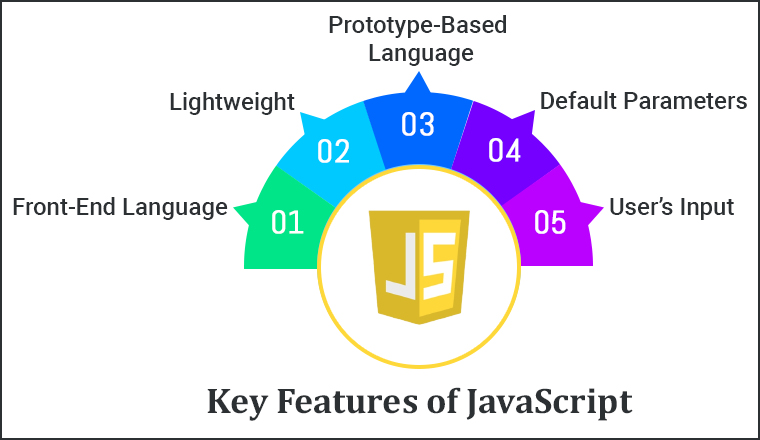
Java and JavaScript are both essential programming languages. It is hard to have even a passing passion for coding without seeing these words. However, they are also readily confused. Some may erroneously believe that Java is only a reduced variant of JavaScript. Despite certain similarities, these two languages work quite independently. The purpose of this article is to explain the distinction between Java and JavaScript.
1. What is Java?
Java programming language is a network-centric, purpose-driven, cross-platform scripting language. It is the most common object-oriented programming language that is used for web development. Java is one the most popular programming language originally introduced by Sun Microsystem in 1995. Java was bought by Oracle Corporation afterward.
2. What is JavaScript?
JavaScript is a programming language that facilitates the development of dynamic web pages. It adheres to the norms of client-side programming, thus it operates on the user’s computer without requiring server-side resources. You may also utilize JavaScript code alongside REST APIs, XML, and other technology. Currently, JavaScript has many frameworks for both front and back-end development respectively named Angular and Nodejs.
(Note- For instance, if you want to outsource backend development, hiring Nodejs development services is a better way and similarly you can do so for the frontend. However, framework selection should entirely depend on your project requirements.)
3. Key Features of Java

3.1 Easy and Simple to Understand
Java is renowned for its cleanliness, as its code is derived from languages such as C and C++ yet lacks the intricacies of those languages. Intricacies such as Storage types and operator stacking etc.
3.2 Platform-Independent
Java is an independent-platform programming language. This indicates that Java code may be executed on any computer, environment, or OS. Along with this, Java is also called a general-purpose programming language which means you write the code once and run it anywhere.
3.3 Feasible
ByteCode is an aggregated code that is derived from the source code and executed by the JVM. JVM is software that enables the execution of ByteCode across several machines and OS.
3.4 Object-Oriented
Java provides all object-oriented programming capabilities and ideas, including Complexation, Abstraction, and Composition among others. These OOP features give the language several benefits, including security, data redundancy prevention, and simple debugging.
3.5 Compiled and Interpreted
Numerous computer languages benefit from either compiling or understanding the code. Java, on the contrary, combines both of these benefits. Compiling Java source code into ByteCode and interpreting it on JVM makes it accessible on any system or environment.
3.6 Secure and Reliable
Java is a safe and dependable programming language for skilled developers since it has several tools, capabilities etc. It offers secure connectivity, public key architecture, identification and encryption among other features to give developers a safe and dependable environment.
4. Key Features of JavaScript

4.1 Front-End Language
JavaScript is also used as a front-end programming language that does not need substantial browsing features to operate (as Javascript is based on browser compatibility). Unlike server languages such as PHP, ASP.NET, etc., it does not require server support to complete simple activities. This eliminates a great deal of time on recurring activities.
4.2 Lightweight
JavaScript is very light and compact in nature. It implies that with basic functions and properties, it is simple to create, operates without additional browser computations, and eliminates excessive RAM and CPU burden.
4.3 Prototype-Based Language
JavaScript is a prototype-based programming language, which implies that it employs object prototypes to generate new objects. In contrast to Java, classes are declared before objects are generated.
4.4 Default Parameters
Default Parameter is a JavaScript feature that prevents a programmer’s code from failing due to a single or basic error. It is a function parameter that does not require definition but safeguards the code against basic mistakes.
4.5 User’s Input
In regards to bug detection, JavaScript also considers user input. This can be understood by the fact that if a user leaves a form field blank or enters inaccurate data, the program will not execute. The data integrity for the client saves a great deal of time while error detection and troubleshooting.
5. Key Difference Between Java and Javascript
Java is free from any platform and is more of a purpose-driven language since it runs on the Java Virtual Machine (JVM). JavaScript is also an object-oriented programming language but the one that facilitates the creation of dynamic HTML pages. Java vs JavaScript has recently been a popular topic of conversation. Let’s discuss some points:
5.1 Purpose
Java is utilized for all server-side programming, but JavaScript is largely used for client-side scripting in activities such as JS validation and interaction.
5.2 Applications Operate Uniquely
When comparing Java with JavaScript, it is essential to understand how both apps operate. The functionality of Java and JavaScript apps is fundamentally dissimilar. Java programs can operate on a web browser or virtual machine but JavaScript code can only operate in a web browser.
5.3 Usability
Java programs are utilized in a variety of contexts including android app production, desktop software production, and the construction of commercial and banking apps. However JavaScript is only used to make web applications more dynamic and creative. It also provides assistance in creating HTML slides.
5.4 Compiled vs Interpreted
Java is a language that is compiled but JavaScript is a scripting language that is interpreted. These two scripts have distinct structures. Although Java code is translated into bytecode and executed on the Java Virtual Machine, JavaScript is immediately processed by a computer in the syntax in which it has been produced.
6. Java vs Javascript: In Detail
6.1 History and Development
In 1996, Sun Microsystems introduced a Java program. Initially, they hoped to install Java on television screens in order to facilitate interaction but these ideas were abandoned. Rather, Java found its place in server-side programming or the backend operations of programs.
Netscape invented the computer language Mocha in 1995. Mocha, which later became JavaScript was created with ease of use in view. Like CSS, it was designed to be incorporated inside HTML. JavaScript, in contrast to CSS, provides interaction.
Netscape and Sun Microsystems later reached an agreement in reaction to the expanding prominence of Internet Explorer, a significant Netscape rival. Netscape provided Sun with the ability to execute Java applications on web browsers, allowing them to capitalize on the language’s momentum. In response, Netscape renamed Mocha to JavaScript.
6.2 Famous Companies Using Java and JavaScript
| Brands that use Java | Brands that use JavaScript |
| Airbnb | Paypal |
| Uber | Netflix |
| Netflix | Groupon |
| Spotify | Uber |
| Meta (Facebook) | |
| eBay |
6.3 Type of Language
- Java is an object-oriented programming language based on classes. JavaScript is a programming/scripting language based on prototypes.
6.4 Learning Curve
- Java is an expansive language with abundant information, online papers, books, clubs; forums, etc., making it simple to learn.
- JavaScript is relatively compact, has extensive online information, and communities, and is simple to learn.
6.5 Syntax
- Java blocks limit the scope of variables and variables cease to exist outside of the block.
- JavaScript is typically integrated into HTML and CSS, limiting its scope to operations.
6.6 Strongly-Typed Language vs Weakly-Typed Language
- Java is a strongly typed language, therefore variables and other entities must be declared prior to use.
- JavaScript is a weakly typed language and simpler in terms of its rules.
6.7 Security
- Java language is designed with the primary aim of maintaining source code safe and it offers extensive tools to facilitate this.
- The source code of JavaScript is not fundamentally secure as plain text is accessible to all. Programmers must implement additional security features.
6.8 Extension
- Java allows the “.Java” file format.
- Javascript allows the “.Javascript” file format.
6.9 OOPS
- Java is an object-oriented scripting language while JS is based on Javascript objects.
6.10 Support
- Java is accessible by the majority of OS, as nearly every platform provides it.
- JavaScript is accessible by the majority of web browsers on various operating systems, and it is easy for developers to construct scripts utilizing JavaScript.
6.11 Concurrency
- Java language allows and assures concurrency through the use of multithreading, which makes the application quicker and more effective.
- To execute JavaScript code, the execution should not be parallel or simultaneous in the case of several events.
7. Advantages and Disadvantages of Java
Advantages:
- Extensive documentation is accessible.
- Availability of a wide pool of qualified java developers.
- Numerous third-party tools and libraries.
- It enables you to create standard software with reusable code.
- It is a multi-threaded platform that permits the concurrent execution of several tasks within a program.
- Outstanding performance.
- Allows the user to browse libraries.
Disadvantages:
- JIT compiler slows down the program significantly.
- Java has a high demand for memory and computing speed. Consequently, hardware costs rise.
- It lacks support for poor programming structures such as pointers.
- You have no authority over garbage management since Java lacks delete() and free() features.
8. Advantages and Disadvantages of JavaScript
Advantages:
- It is an open-source initiative supported by Microsoft.
- An instrument built specifically for tiny letters.
- Includes classes, interfaces, & modules.
- JavaScript is compatible with all browsers.
- Permits cross-compiling.
- You may extend JavaScript for writing large apps.
- You may save and obtain data on the user’s machine using JavaScript.
- Instantaneous feedback for the visitors.
- It enables the creation of interfaces that respond to mouse hovering.
Disadvantages:
- Client-side scripting languages like JavaScript do not support file browsing or editing. It has been retained for security purposes.
- JavaScript cannot be utilized for networking programs due to the lack of accessible technology.
- JavaScript lacks multithreading and multiprocessor capabilities.
9. Conclusion
After reviewing this post on Java vs. JavaScript, you will have a comprehensive understanding of these two technologies that have transformed the application development business. While employing Java makes your program safer and more resilient, JavaScript enhances the application’s appearance.
You would have known by now that both the technology Java and JavaScript are best for your next web application development project. For this, all you have to do is engage a dedicated developer to create attractive apps according to your project specifications. In search of one? Contact TatvaSoft today.




This article offers a clear overview of the key differences between Java and JavaScript. I recommend it to beginners who are trying to decide which language to choose. Keep sharing valuable content!